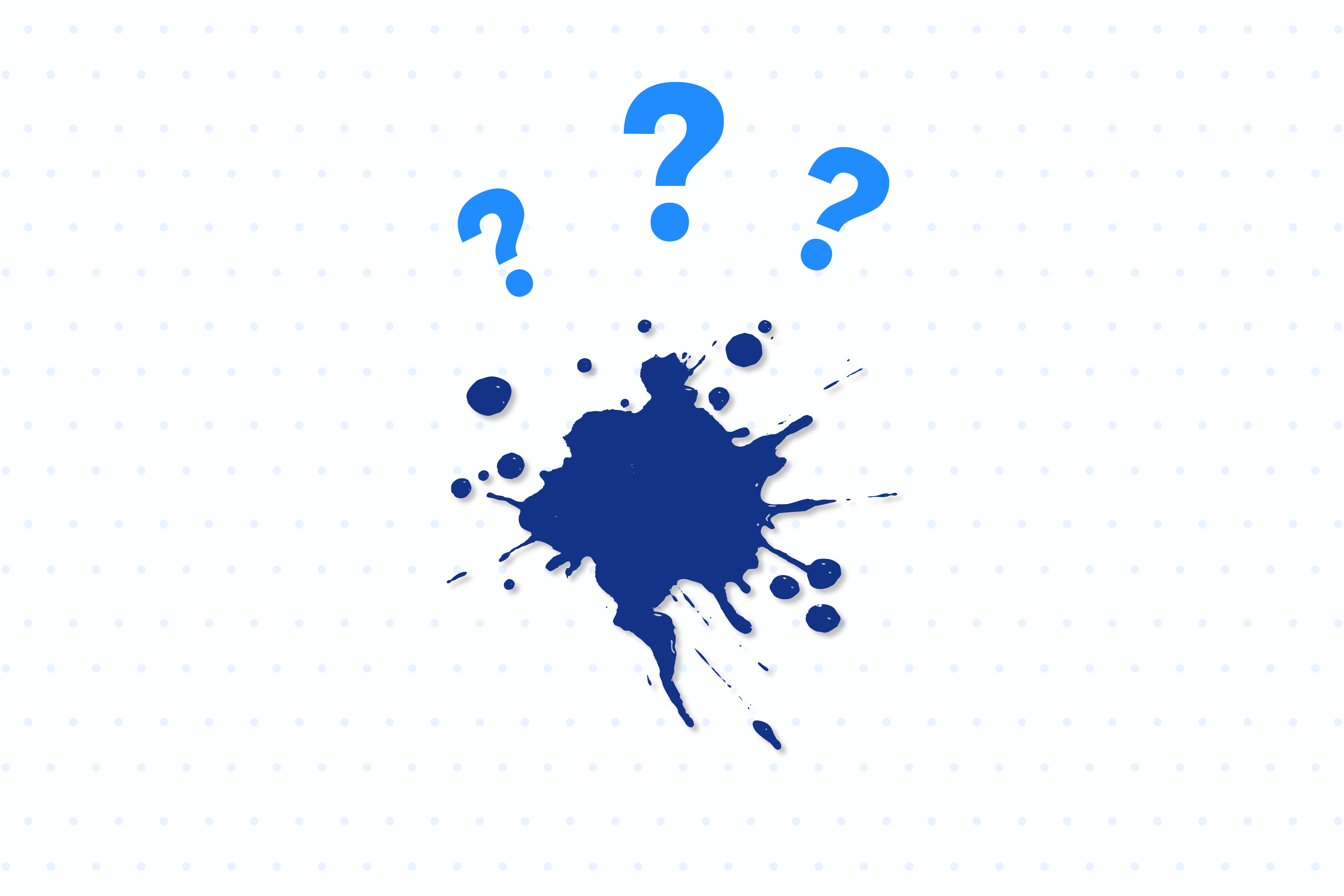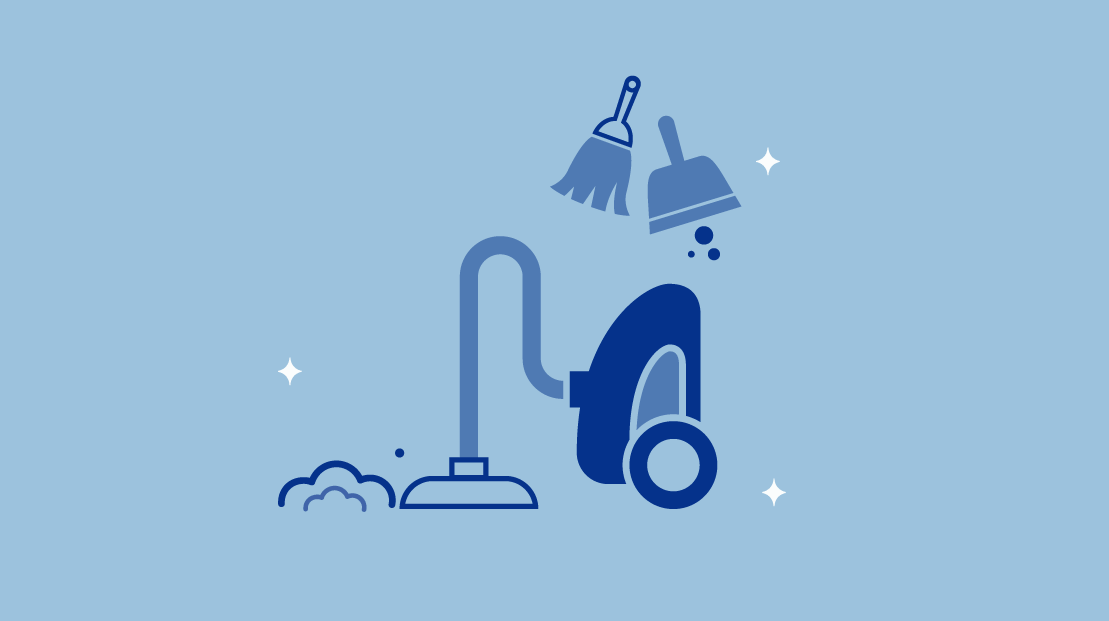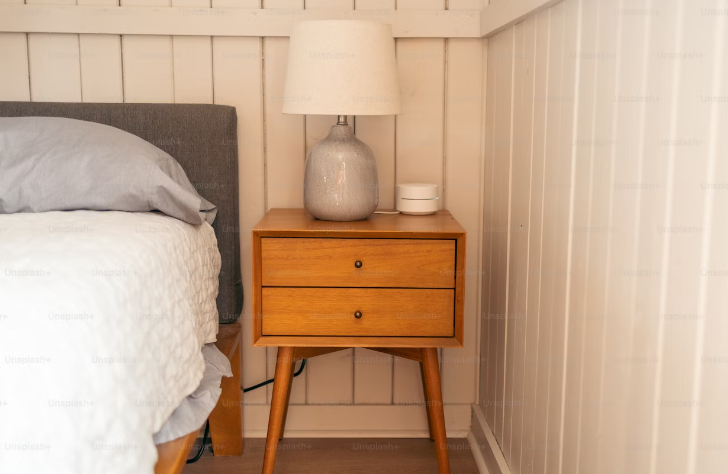Key Takeaways
- Act Quickly: Tend to ink stains promptly to prevent permanent damage. Blot the stain and use suitable cleaning materials like rubbing alcohol or hydrogen peroxide.
- Prevention Is Key: Invest in a stain-proof mattress protector to safeguard your mattress and bedding. Handle ink pens and markers carefully near your sleeping area.
- Effective Cleaning Techniques: Use laundry pre-treatments, vinegar solutions, or natural stain removers like baking soda paste to effectively remove ink stains from bedding. Consider the fabric type and use a delicate wash cycle for cleaning.
Maybe a pen suddenly burst in bed or leaked onto your bedspread, so maybe you had traces of ink on your hands or clothes when you crawled into bed. Whatever the reason for their presence, it’s frustrating to see ink stains on your mattress, blanket, sheets, or other bedding
But don’t panic. There are several methods you can use to remove ink stains effectively.
It’s always best to tend to ink stains on your bedding as quickly as possible to avoid permanent damage. You can still remove dried ink stains, but they’re much harder to get rid of than fresh ink spots.
Additionally, prevention is better than cure. Investing in a stain-proof mattress protector can go a long way in avoiding lasting ink spots and other stains.
In this article, we’ll explore different methods to remove ink stains from your mattress and bedding. With our step-by-step guide and tips and tricks, you’ll be able to tackle these stains with ease.
Quick Guide: A 30-Second Summary
| Best Stain-Proof Mattress Protector | Amerisleep Mattress Protector |
Step-by-Step Guide to Removing Ink Stains from a Mattress
Accidents happen, and ink stains on a mattress can be frustrating. Ink can be a tough stain to remove, but with the right methods, it is possible to get rid of it. Here is a step-by-step guide on how to remove ink stains from a mattress.
Gather the Necessary Materials
Before you start, gather the necessary materials. You will need:
- Rubbing alcohol or hydrogen peroxide
- Clean cloth or paper towels
- Cotton balls or Q-tips
- Clean water and a spray bottle
- Baking soda or a homemade stain remover
Step-by-Step Instructions
Follow these instructions to remove ink stains from your mattress:
- Blot the ink stain with a clean cloth or paper towel to absorb any excess ink.
- Apply rubbing alcohol or hydrogen peroxide to the stain using a cotton ball or Q-tip. Be sure to test a small, inconspicuous area first to ensure that the alcohol or peroxide does not damage the fabric.
- Blot the stain gently with a clean cloth or paper towel. Avoid rubbing the stain, as this can cause it to spread.
- Repeat steps 2 and 3 until the stain is no longer visible.
- Use a spray bottle filled with clean water to rinse the area and remove any remaining traces of the cleaning solution.
- Allow the entire mattress to air dry completely before putting sheets and bedding back on.
- If the stain persists, you can try a homemade stain remover by mixing baking soda and water into a paste and applying it to the stain. Let it sit for 30 minutes before rinsing with clean water and blotting dry with a clean cloth or paper towel.
It is important to note that prevention is key when it comes to ink stains on mattresses. To avoid future stains, consider using a stain-proof mattress protector or investing in a protective mattress pad.
Additionally, handle ink pens and markers with care when near your mattress to avoid accidents.
Removing Ink Stains from Bedding: Tips and Tricks
Removing ink stains from bedding can be a daunting task, but with the right tips and tricks, it can be done effectively. Here are some practical methods that you can use to remove ink stains from your bedding:
1. Use Laundry Pre-Treatments
If the ink stain is fresh, apply a laundry pre-treatment to the affected area before washing the bedding. This will help to break down the ink and make it easier to remove.
2. Try Vinegar
Vinegar is a natural cleaning solution that can help to remove ink stains from your bedding. Mix equal parts of vinegar and water, and apply the solution to the stain. Let it sit for a few minutes, and then wash the bedding as usual.
3. Use a Natural Stain Remover
If you prefer to use a natural cleaning solution, try making a paste of baking soda and water and apply it to the stain. Let it sit for 15-20 minutes and then rinse the bedding with cold water. This will help to remove the stain and leave your bedding smelling fresh.
4. Consider the Type of Fabric
When attempting to remove ink stains from bedding, it’s important to consider the type of fabric. Some fabrics, such as silk and satin, require special treatment. If you’re unsure how to clean a particular type of fabric, consult the care label or seek professional cleaning assistance.
5. Use a Delicate Wash Cycle
When washing bedding that has ink stains, use a delicate wash cycle and a mild detergent. Avoid using hot water and high heat in the dryer, as this can set the stain and make it more difficult to remove.
With these tips and tricks, you can effectively remove ink stains from your bedding and keep it looking clean and fresh. Remember to act quickly to remove the stain and to use preventive measures like using a stain-proof mattress protector to avoid future stains.
The Benefits of a Mattress Protector
Investing in a high-quality mattress protector is one of the best ways to prevent permanent stains on your mattress. A mattress protector creates a barrier between you and the mattress itself.
This barrier shields against spills, stains, and other damage. Otherwise, you might need to consult one of these guides to save your mattress from a mess:
- How to Remove Blood Stains on Your Mattress
- How to Remove Urine Stains and Smell From a Mattress
- How to Get Poop Stains out of a Mattress
- How to Remove Makeup Stains from Mattresses
- How to Remove Coffee Stains from Your Mattress
- How to Clean Vomit from a Mattress
- How to Get Sweat Stains Out of a Mattress
- How to Get Lint Balls off a Mattress
- How to Clean a Dusty Mattress
- How to Fix a Ripped Mattress
- How to Remove Rust Stains on a Mattress
- How to Spot and Clean Mold on Mattress
- How to Dry a Wet Mattress After Water Damage
Other benefits of using a mattress protector include:
- Protects against dust mites, allergens, and bacteria in bed
- Absorbs perspiration for a drier, more hygienic sleep environment
- Extends the lifespan of your mattress by protecting it from wear and tear
By using a mattress protector in tandem with quick stain treatment methods, you can keep your mattress looking like new and avoid permanent ink stains and other frustrating blemishes.
More Bedding Cleaning Guides
For pillows:
- How to Wash and Dry All of Your Pillows
- How to Disinfect Your Pillow
- How to Fluff a Pillow
- How to Wash a Body Pillow
For sheets:
- How Often Should You Wash Your Sheets?
- How to Make Sheets White with Household Items
- Can You Wash Sheets with Clothes and Other Items?
- How to Get Blood Out of Sheets
- How to Iron Sheets
- How to Make Sheets Softer
For other bedding items:
- How To Clean a Memory Foam Mattress Topper
- How to Clean a Comforter
- How Long Does It Take to Dry Clean a Comforter?
- How to Wash a Quilt
- How to Wash a Duvet
- How to Clean an Electric Blanket Safely
- How to Clean a Weighted Blanket
- How To Wash a Crochet Blanket
- How Often Should You Wash Your Mattress Protector
- How to Clean an Upholstered Bed Frame
- How to Get Pet Hair Out of Bedding
FAQs
How do you remove ink stains naturally?
One effective natural method to remove ink stains is by using white vinegar. Mix equal parts of vinegar and water and apply the solution directly to the stain. Let it sit for a few minutes, then blot the area with a clean cloth or paper towel. You can also create a paste using baking soda and water and apply it to the stain, letting it sit for a while before rinsing.
Another paste mixture is to take a small amount of milk and mix it with cornstarch, applying the paste to the ink stain. One last natural option is using lemon juice, which works similarly to vinegar in breaking down the ink stain. Remember to test these natural remedies on a small, inconspicuous area first to ensure they do not damage the fabric.
How do you remove dried ink stains?
Removing dried ink stains can be more challenging than fresh ink, but it is still possible with the right techniques. One effective method is using isopropyl alcohol or rubbing alcohol. Dampen a cloth with the alcohol and blot the stained area, gradually increasing the pressure to help lift the ink.
You can also try using a commercial stain remover specifically designed for ink stains. Apply the stain remover as per the product instructions, allowing it to sit on the stain for the recommended duration before laundering the fabric as usual. It’s crucial to act as soon as possible on dried ink stains to improve the chances of successful removal.
Is hot or cold water better for ink stains?
When dealing with ink stains, it’s generally better to use cold water. Hot water can set the stain, making it more difficult to remove.
Begin by rinsing the stained area with cold water to help prevent the ink from spreading further. Avoid using hot water until the stain has been successfully treated and removed. Remember to act promptly and use suitable cleaning materials to prevent the ink from setting into the fabric.
How do you clean up spilled pen ink?
If you spill pen ink, start by blotting the area with a clean cloth or paper towel to absorb as much ink as possible. Avoid rubbing the area, as this can cause the stain to spread. Next, apply a small amount of isopropyl alcohol or a homemade vinegar solution to the stain, gently blotting it with a clean cloth. Repeat the process until the ink stain is no longer visible.
Be sure to check the fabric care label before using any cleaning solution and to test the cleaning method on a small, inconspicuous area first.
What is the best ink stain remover?
The best ink stain remover often depends on the type of fabric and the specific characteristics of the stain. However, some effective commercial stain removers are designed for ink stains. These cleaners include products containing enzymes or specialized solvents. Look for stain removers that are safe for the particular fabric you are treating and follow the product instructions carefully.
Additionally, natural remedies like white vinegar, lemon juice, or baking soda paste can also be effective for treating ink stains, depending on the severity of the stain and the type of fabric. Remember, always test any stain remover on a small, inconspicuous area of the fabric before applying it to the entire stain.
Conclusion
Ink stains can be frustrating, but with the right techniques and materials, they can be effectively removed from mattresses, sheets, blankets, and other bedding. The key is to act quickly when a stain occurs, using absorbent materials to blot excess ink before applying cleaning solutions like rubbing alcohol, hydrogen peroxide, or natural options like vinegar and baking soda.
For bedding, examine fabric types and read any laundry care symbols. Then use laundry pre-treatments, delicate cycles, and low-heat drying to lift stains without causing damage.
While stains do happen, prevention is always better. So invest in a high-quality mattress protector and handle ink pens carefully around your bed. With some diligence and patience, ink stains don’t have to become permanent eyesores.
About the author
April Mayer is a sleep expert and writer with a degree in exercise physiology. She has dedicated her career to exploring the relationship between sleep and productivity. Her insightful articles, such as "The Surprising Way Your Mood Might Be Messing With Your Productivity" and "Wake Up to More Productive Mornings," have been featured in reputable publications like Forbes, Greatist, Real Homes, Thrillist, Tom's Guide, and Eat This, Not That. With a passion for helping others lead more productive lives through restful sleep, April offers valuable expertise on foods and vitamins for better sleep. As a trusted member of the Early Bird team since March 2020, she continues to provide informative and well-researched content.
View all posts





